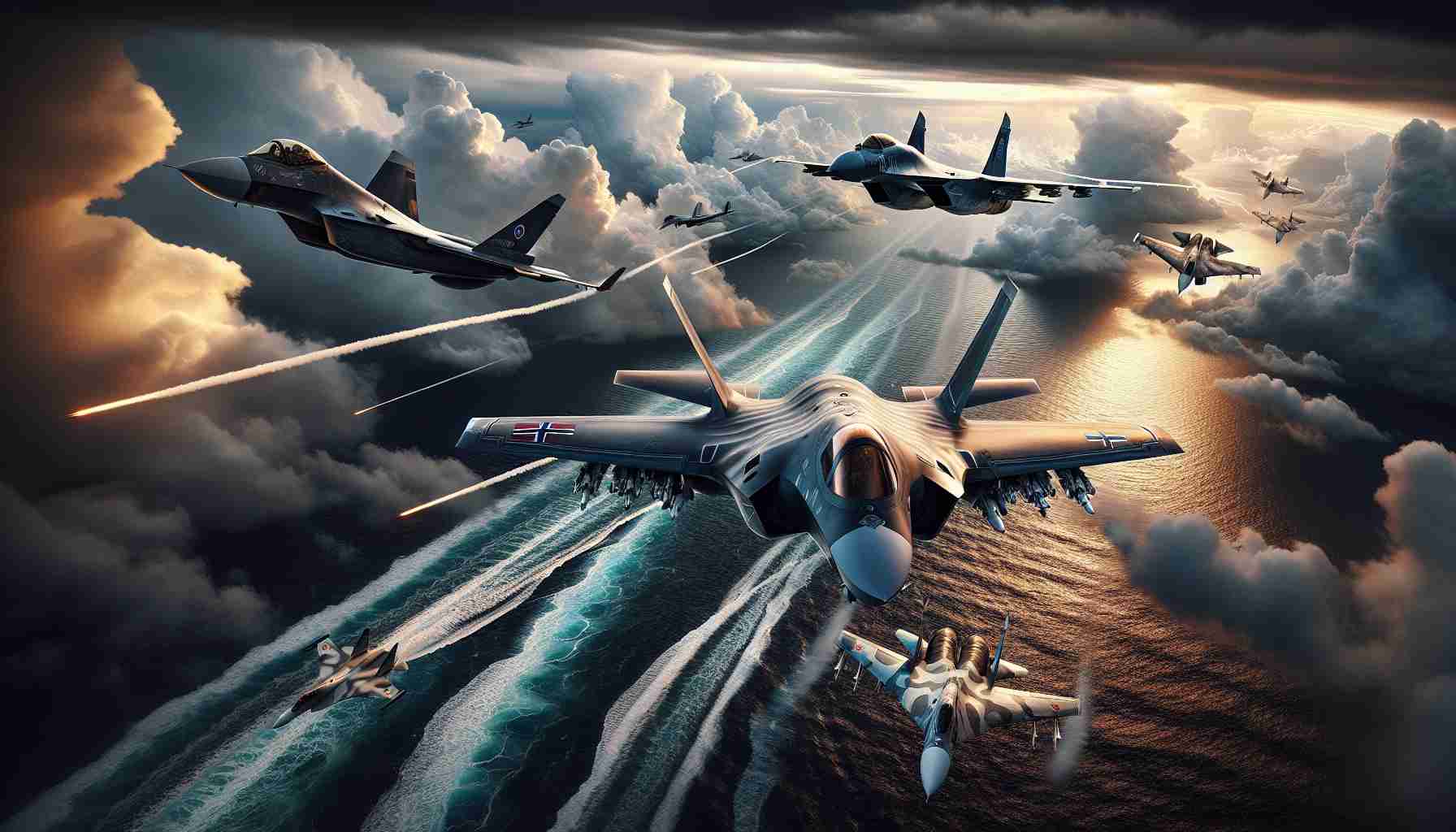- Two Norwegian F-35A stealth fighters intercepted a Russian Su-33, indicating heightened military readiness in the region.
- The Su-33’s operation far from its carrier suggests a possible shift in Russian long-range tactics or resource challenges.
- This event highlights NATO’s dedication to regional security amid heightened tensions due to Russia’s actions in Ukraine.
- The encounter showcases the advancements in military aviation and the strategic significance of national defense in the Arctic.
- The incident serves as a reminder of the escalating geopolitical tensions and potential arms races in the northern skies.
In a striking display of military readiness, two Norwegian F-35A stealth fighters intercepted a Russian Su-33 as it accompanied Tu-95MS strategic bombers across the North and Norwegian Seas. This peculiar encounter marks a significant moment, as the Su-33, a carrier-based heavyweight, is rarely seen conducting operations far from its usual base aboard Russia’s only aircraft carrier, the Admiral Kuznetsov, currently undergoing repairs.
The Russian Ministry of Defense claimed it was merely a “routine flight,” lasting over four hours. However, the deployment of the Su-33 signals much more. Operating from land-based airfields, its presence suggests Russia may be testing different long-range escort tactics, or perhaps grappling with resource constraints.
The interception underscores NATO’s commitment to maintaining security and stability in the region amidst rising tensions following Russia’s invasion of Ukraine. Royal Norwegian Air Force Major General Øyvind Gunnerud emphasized the importance of rapid response in safeguarding both national and NATO interests.
This rare meeting of two advanced fighter jets—Russia’s Su-33 and Norway’s cutting-edge F-35s—demonstrates the evolving landscape of military aviation. The F-35’s stealth capabilities and situational awareness highlight Norway’s strategic defense preparations amidst a backdrop of increased military maneuvers in the Arctic.
Ultimately, this incident isn’t just another military operation; it’s a vivid reminder of the strategic high-stakes game unfolding in northern skies. As nations flex their military muscle, the implications for future geopolitical tensions and technological arms races become increasingly clear. Stay informed and witness how these dynamics shape our global landscape.
Unveiling the Implications: Russian Military Moves and NATO Readiness
Military Context of the Su-33 Interception
The recent interception of a Russian Su-33 by Norwegian F-35As signifies a critical juncture in military operations within NATO’s northern flank. While the Russian Ministry of Defense labeled the incident a “routine flight,” analysts suggest this maneuver may be indicative of broader strategic objectives, including the testing of operational capabilities and adjustments to tactical defense postures amid resource constraints.
# Key Insights
1. Emerging Military Strategies: The utilization of a Su-33 outside its typical operational zone highlights a shift in Russian military strategy, possibly aimed at enhancing long-range air defense and offensive capabilities.
2. NATO’s Response: The quick interception by the Norwegian Air Force not only reflects the readiness of NATO forces but also underscores the alliance’s commitment to regional stability in the face of persistent threats.
Pros and Cons of Increased Military Activity
# Pros
– Enhanced Readiness: Frequent interceptions demonstrate NATO’s ability to promptly address potential threats.
– Intelligence Gathering: Such encounters provide valuable data on adversary tactics and technologies.
# Cons
– Escalation Risks: Increased military presence can lead to unintended confrontations or accidents.
– Resource Allocation: Sustaining heightened operational readiness may strain military budgets and logistics.
Market Forecast for Defense Spending
According to defense analysts, military expenditures in Northern Europe are predicted to rise significantly in the wake of heightened tensions. Countries like Norway are expected to allocate more resources toward advanced fighter technologies and surveillance capabilities.
Limitations of Current Military Technology
Despite advancements, there are notable limitations in current military technology:
– Stealth Limitations: The effectiveness of stealth technologies can be compromised in dense radar environments.
– Operational Costs: Maintaining advanced aircraft like the F-35 involves significant training and maintenance expenses that can impact military budgets.
Most Important Questions
1. What strategic objectives is Russia pursuing with the Su-33’s deployment?
– Russia appears to be testing new air defense strategies and adapting its military operational framework, especially since it is reliant on land-based support given the status of its aircraft carrier.
2. How should NATO countries respond to such military provocations?
– NATO must maintain enhanced vigilance and readiness, while also engaging in diplomatic channels to mitigate risks of escalation.
3. What implications does this interception have for future geopolitical tensions?
– This incident exemplifies the increasing military rivalry in the Arctic region, potentially leading to an arms race and further geopolitical friction among NATO and Russian interests.
Suggested Related Links
– NATO Official Site
– Russian Ministry of Defense
– F-35 Official Site
